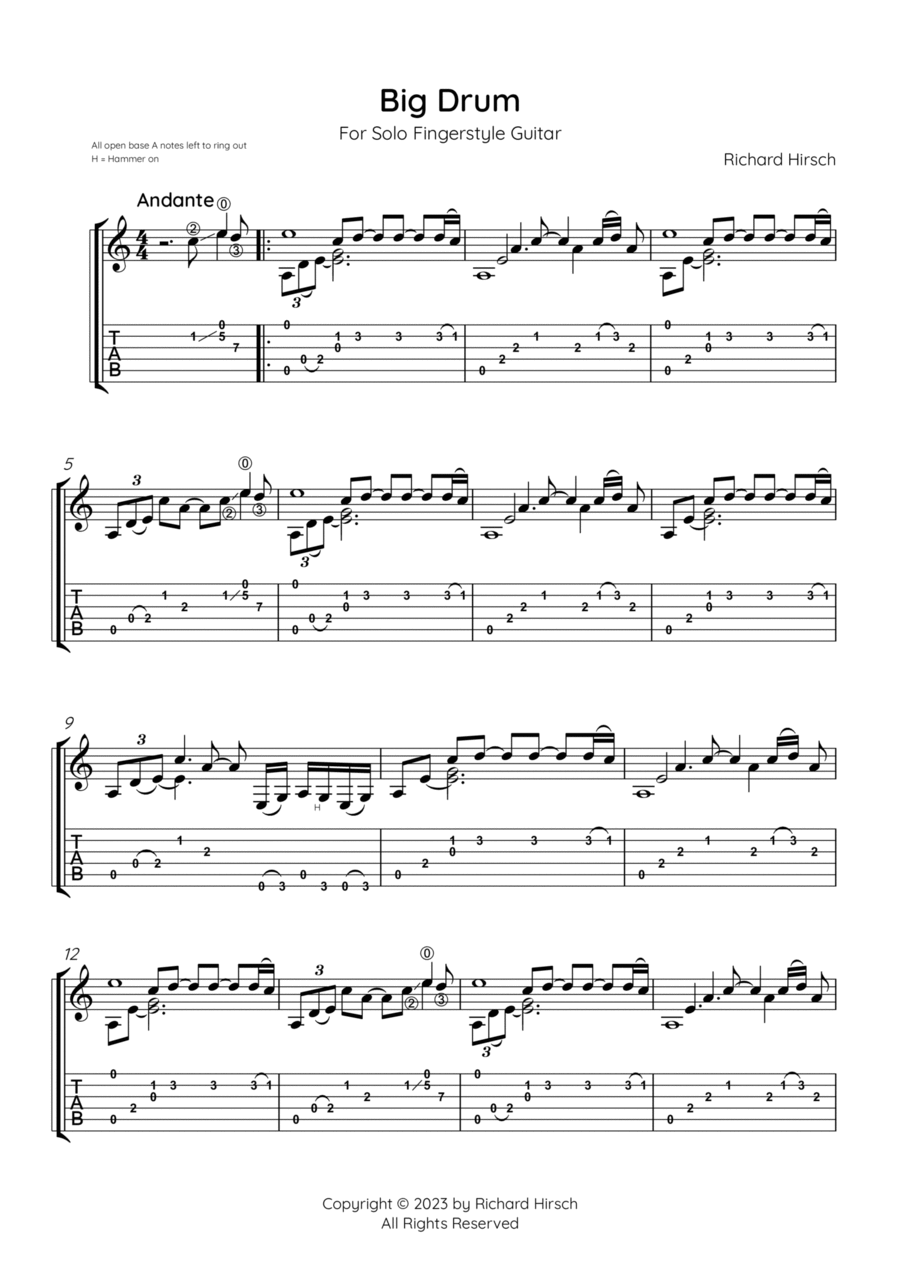Solo Guitar - Level 4 - Digital Download SKU: A0.1202804 Composed by Richard Hirsch. 20th Century,Contemporary,New Age. Individual part. 9 pages. Richard Hirsch #801568. Published by Richard Hirsch (A0.1202804). I offer an original composition for solo acoustic guitar that I have carried with me over several decades and through several changes in living situation. I started working with the piece already back in the 1970s when I was living in Frankfurt/Main, Germany and kept developing it when I moved to Stockholm and from there to Gothenburg, Sweden. A first recording of the composition was made in a private studio just outside Gothenburg in 1987. I have only recently been able to transmit the piece to musical notation in preparation for publication.The piece has a relaxed nature and contains many repetitions of simple themes that are meant to evoke a sense of monotonous spaciousness. One musician who listened to the first recording said he thought it sounded minimalistic, which I thought was a good description, although at the time I was unaware that minimalism was a term used to describe a whole style of music. The piece has a rather meditative character in the first part, turning more rhythmic in the second part. The third part is a swing version of the first part and the piece ends with a return to the meditative straight first part. The piece is meant to be primitive in the sense of primordial and goes in something resembling a pentatonic scale based on A. The rhythmic second part should be played so that the guitar starts to hum an A tone, the humming carrying over into and through the more melodic sections. The composition has an organic development with slight variations in the basic themes as the piece progresses.Depending on the mood of the interpreting performer, the repetitions might be played in a different order or a different number of times. I seldom play the composition exactly the same every time myself. The piece has also worked as a basis for jam sessions with accompaniment of drums and a base, although the guitar had to have some sort of amplification. The piece can be played on either steel string or nylon string acoustic guitars, or electric guitars. I chose the title Big Drum because of the recurring base A that is a dominant feature of the piece, reminding me of the big drums played by people all over the world. The piece has a participatory character, especially in the more rhythmic and swing parts, inviting the listeners to clap, stamp their feet, or drum on whatever is available,As the notation is accompanied by tablature, I refrain from giving left hand fingering. The right hand fingering consists basically of base notes played by the thumb and treble notes played by alternating index and middle fingers in combination with the ring finger.
